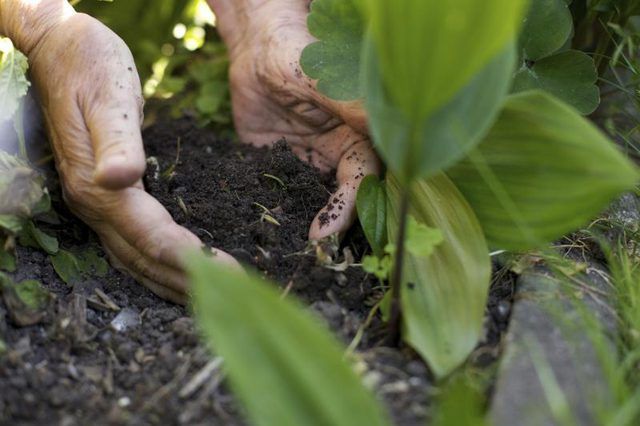Bulbs
Flower Basics
Flower Beds & Specialty Gardens
Flower Garden
Garden Furniture
Garden Gnomes
Garden Seeds
Garden Sheds
Garden Statues
Garden Tools & Supplies
Gardening Basics
Green & Organic
Groundcovers & Vines
Growing Annuals
Growing Basil
Growing Beans
Growing Berries
Growing Blueberries
Growing Cactus
Growing Corn
Growing Cotton
Growing Edibles
Growing Flowers
Growing Garlic
Growing Grapes
Growing Grass
Growing Herbs
Growing Jasmine
Growing Mint
Growing Mushrooms
Orchids
Growing Peanuts
Growing Perennials
Growing Plants
Growing Rosemary
Growing Roses
Growing Strawberries
Growing Sunflowers
Growing Thyme
Growing Tomatoes
Growing Tulips
Growing Vegetables
Herb Basics
Herb Garden
Indoor Growing
Landscaping Basics
Landscaping Patios
Landscaping Plants
Landscaping Shrubs
Landscaping Trees
Landscaping Walks & Pathways
Lawn Basics
Lawn Maintenance
Lawn Mowers
Lawn Ornaments
Lawn Planting
Lawn Tools
Outdoor Growing
Overall Landscape Planning
Pests, Weeds & Problems
Plant Basics
Rock Garden
Rose Garden
Shrubs
Soil
Specialty Gardens
Trees
Vegetable Garden
Yard Maintenance
How to Make Organic Citrus Fertilizer
How to Make Organic Citrus Fertilizer. Citrus trees (Citrus spp.) need specific nutrients to grow and produce fruit, including trace minerals not found in most commercial fertilizers. Fertilizers formulated specifically for citrus are available, or you can mix an organic alternative by combining several different sources of nutrients. Because...

Citrus trees (Citrus spp.) need specific nutrients to grow and produce fruit, including trace minerals not found in most commercial fertilizers. Fertilizers formulated specifically for citrus are available, or you can mix an organic alternative by combining several different sources of nutrients. Because citrus often grow in sandy soils, nutrients are depleted more quickly than in loam or clay soils, and require yearly replacement.
Nutrients for Citrus
Nitrogen is the main nutrient citrus trees need. Even in nutrient-rich soil, citrus trees will need additional nitrogen every year. Other nutrients can be applied less frequently. This includes phosphorus, applied by mixing 1 3/4 cups colloidal phosphate or raw bone meal into the soil at planting, then working 1 pound into the topsoil under the tree every three or four years. Citrus trees also require several trace minerals to thrive, including iron, zinc and manganese. If the leaves start to turn yellow or pale green in between the leaf veins, it is a sign the citrus need additional trace minerals.
Organic Sources of Nitrogen
Organic sources of nitrogen can be combined with other needed nutrients to create a citrus fertilizer. On the years you add phosphorous, it can be mixed with applications of nitrogen. Apply trace minerals separately, as needed. Rates for nitrogen are based on the amount of actual nitrogen in the fertilizer. Fish meal contains 10 percent nitrogen, so you'd need to apply 10 pounds of fish meal to get 1 pound of nitrogen. Shrimp and crab meal contain 25 and 30 percent nitrogen, respectively. You can buy these online or at some garden centers.
How Much Nitrogen to Apply
The first year, a citrus tree need 3 tablespoons of actual nitrogen. The second year, use 1/4 pound nitrogen per tree. Add another 1/4 pound each year until the fifth year. After trees are fully grown, use 1 to 1 1/2 pounds nitrogen per year for most citrus, and 2 to 3 pounds per year for lemons (Citrus limon), which grow in U.S. Department of Agriculture plant hardiness zones 9 through 11. Space the application out through the growing season by dividing the yearly amount by three and applying in the early spring, midsummer and early fall.
Organic Trace Elements
Kelp and seaweed extract supply zinc and iron. They also contain 1 to 1 1/2 percent nitrogen, which should be taken into account when figuring the amount of actual nitrogen. For a soluble seaweed extract, the rate may be 1 1/2 teaspoons of powder dissolved in 1 gallon of water in a sprayer, applied until the liquid drips from the tree's leaves. Application rates vary by brand and product, so refer to the label. Magnesium deficiencies can be corrected using Epsom salts. Apply by dissolving 1/10 pound Epsom salt in 1 gallon of water and spraying it on citrus leaves in the spring after the leaves start to grow.